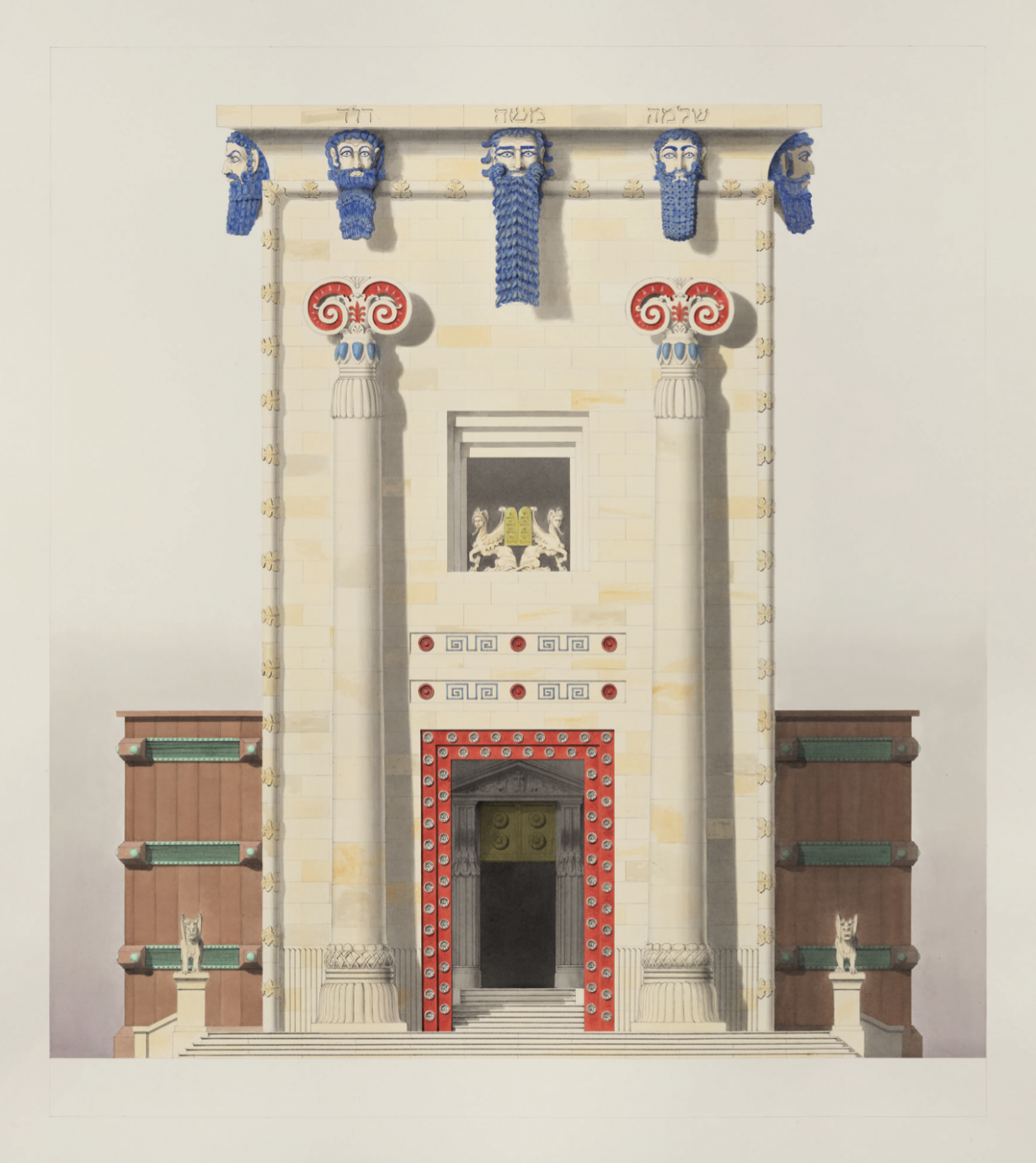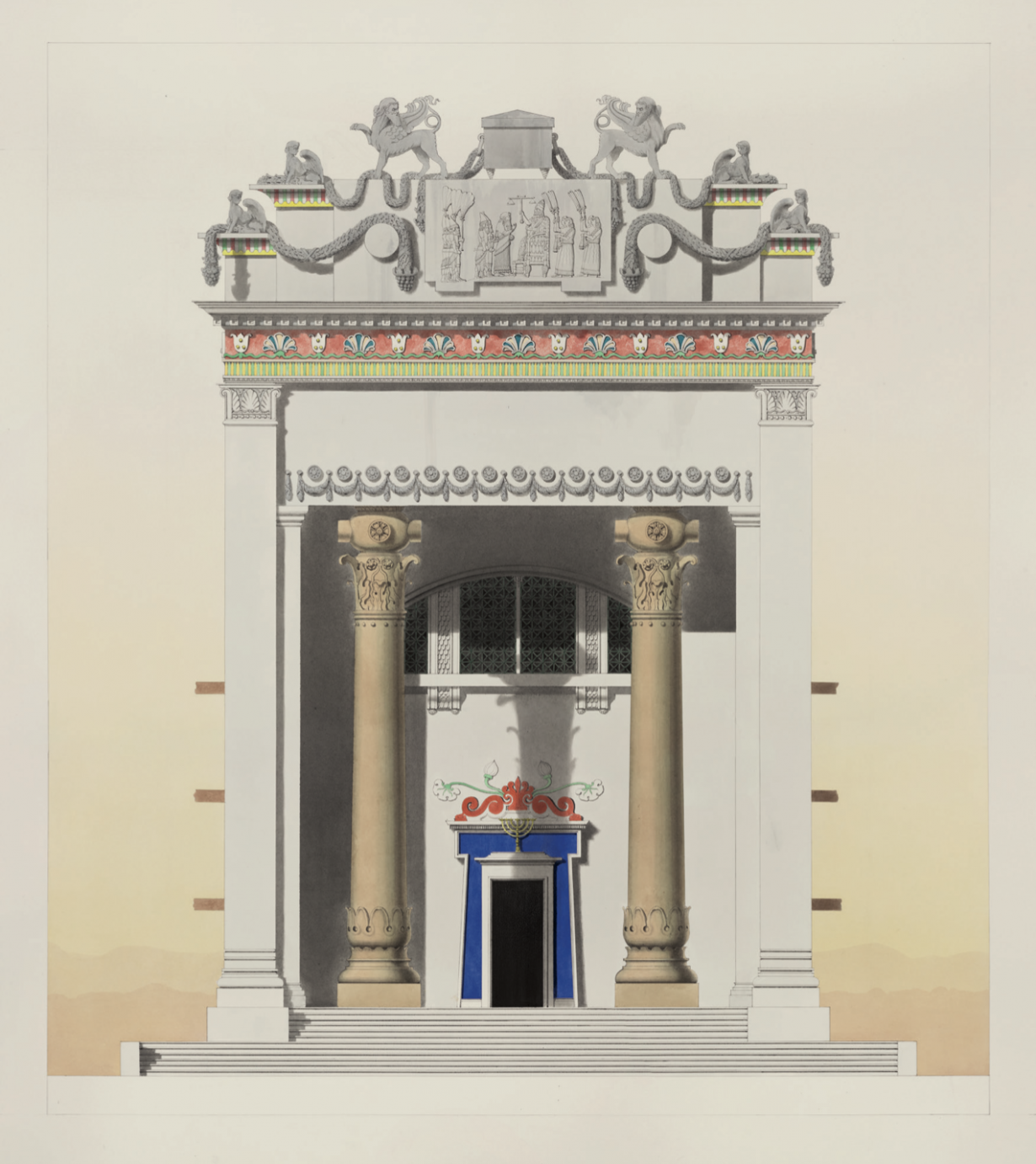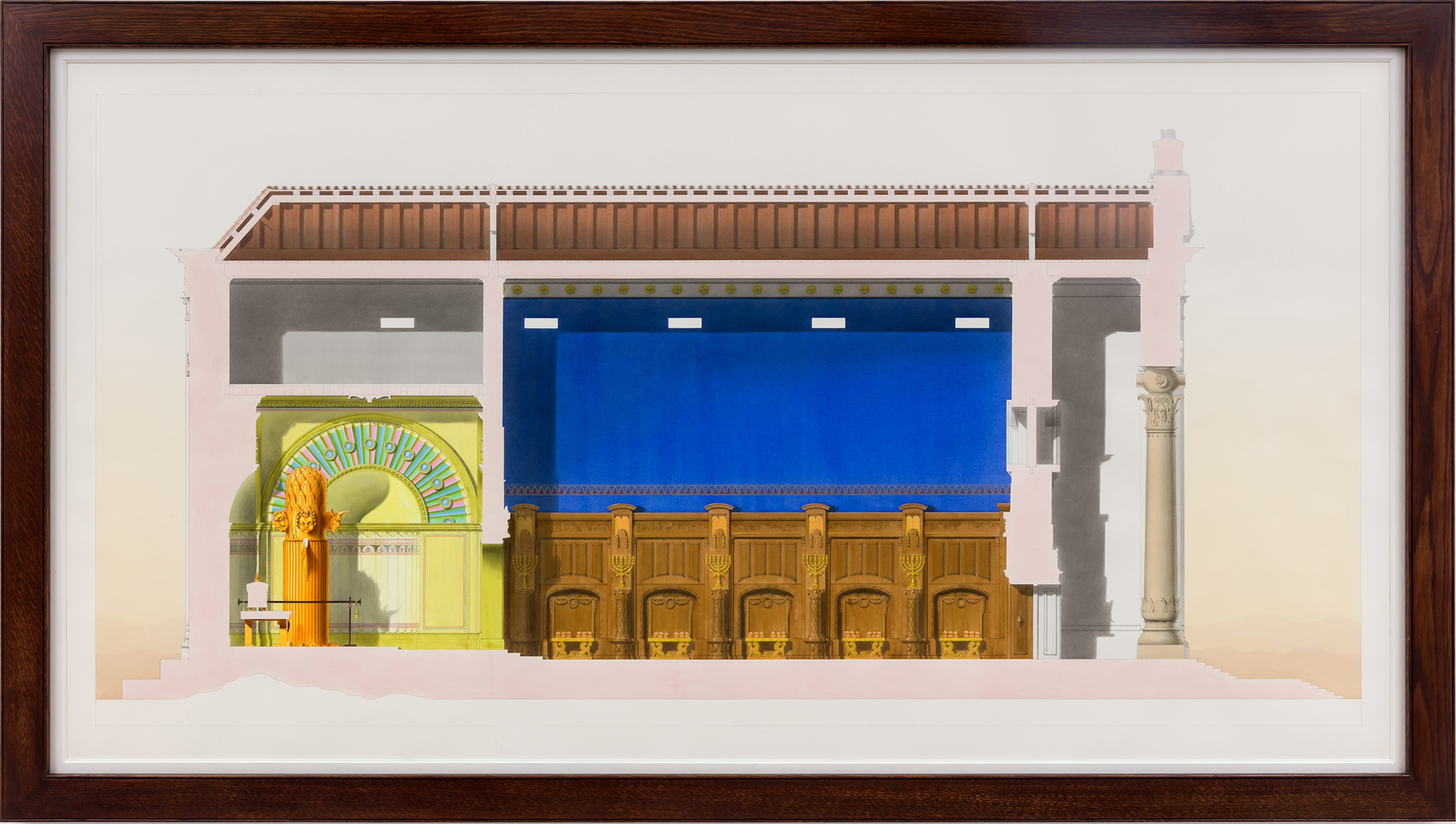By its imagining of the Temple of Solomon, Bronstein’s work can’t help but be pulled by the gravity of political discourse
A lot of art now appears to be a form of political discourse by proxy. At the same time, the artworld is subject to the same kind of polarisation over politics that’s seen everywhere else. This shifts the context for artists who might make art that doesn’t seek simply to take sides, but who nevertheless address subjects that, regardless of their intentions, can’t help but get pulled into the gravity of current cultural and political conflicts.
Pablo Bronstein’s project at Waddesdon Manor is a case in point. In the first instance it’s a proposition that operates within the artist’s longtime fascination with historical architectural style, fed through the artist’s trademark ironic, anachronistic fiction-making. Bronstein’s 2008 book A Guide to Postmodern Architecture in London – in which 1980s postmodernist buildings were catalogued and rendered like etchings in some eighteenth-century architectural almanac, and in which postmodernism’s callbacks to neoclassicism were reimagined as if they were authentic products of the neoclassical period – is an enduring example of the artist’s approach. His 2017 book, Pseudo-Georgian London, similarly excavates the maligned contemporary style of ‘developer-led Georgian’; the histories of art, taste and class underlie Bronstein’s visual fabulations, often turning to the conclusion that cultural identity – battleground that it is – is always, in some way, an invention.
But with his show The Temple of Solomon and its Contents, Bronstein turns his attention to a subject that, while couched in historical fantasy, touches more fraught contemporary realities, since its object is the fabled First Temple described in the Old Testament, built by King Solomon to honour God, destroyed by the Babylonians in the sixth century BCE. Its site still exists – Jerusalem’s Temple Mount, now occupied by the Al-Aqsa Mosque. The Bible describes the Jewish King Solomon’s temple in brief details of its dimensions, layout and materials – but what it ‘actually’ looked like is speculation, which is where Bronstein has stepped in, producing two suites of impressively detailed architectural drawings that offer alternate versions of the temple (alongside two other, large drawings, one of the Ark of the Covenant, a peculiar combination of rococo and medieval ornament, and another of an absurdly rococo-ised menorah). These are presented on the deep brown walls of one of the red-carpeted rooms of Waddesdon Manor, the late-nineteenth-century country house built in a decidedly Neo-Renaissance French château style by Baron Ferdinand de Rothschild (of the banking family) and now managed by the National Trust.

Bronstein’s imagined temple is a virtuoso concoction of styles pick-and-mixed from the architectural history of antiquity. Temple of Solomon (second version): Facade (all works 2024–25) has the temple fronted with Egyptianate columns and portal, topped by a Greek frieze decorated with Egyptian lotus and papyrus motifs, and above that, Assyrian sphinxes flanking a relief depicting a king and his courtiers – Solomon perhaps, even if the scene is based on the ‘Lachish relief’, a stone panel of the seventh century BCE, and depicting the Assyrian king Sennacherib (though, oddly, the wall text suggests that it’s his grandson, Ashurbanipal).
Of course, Bronstein’s historical muddle isn’t supposed to make sense, more so since, for example, the Lachish panel commemorates the Assyrian king’s victory over the Kingdom of Judah. But then The Temple… is really an elaborate disruption of the bounds of fiction and historical truth, while also a circuitous reflection on place, geography, history and identity, of a building that itself is foundational into the historical myths and facts in which Jewish identity is partly grounded. Complicating the work is Bronstein’s mischievous suggestion (in the gallery text) – and borne out by the drawings’ purposefully antique penmanship and yellowish tinge – that these drawings were made by contestants competing for the Prix de Rome, ‘the most important prize for architectural students in 19th-century Paris’. Imagining The Temple as a product of nineteenth-century Europe shifts its decorative whimsy into a gloomier register; one of Orientalist fantasy in a society steeped in imperial bombast and a Europe tilting hard into nationalism, with it a surging antisemitism – from Richard Wagner’s 1869 diatribe ‘Jewishness in Music’ to the scandal of France’s Dreyfus Affair of 1894.

The Temple of course says nothing of this, offering only an opening for interpretation to go down rabbit holes; it could equally bring
you to the conclusion that religious or ethnic identities rooted in origin myths are forms of delusion (though that could be said of any ethnic nationalism anywhere). Regardless, it’s hard to avoid the way in which Bronstein’s fantasy inserts itself into real histories that lead us to the present, ensconced where it is, in Waddesdon’s own extravagant architectural cosplay, planted in the English countryside. In a room not far from where The Temple is displayed, among all the opulent stately-home luxury preserved for tourists, is a room covering the history of the Rothschild family’s involvement in the Zionist movement and the founding of Israel, detailing, for example, how James de Rothschild financed the building of the Knesset, around the time that he bequeathed Waddesdon to the British state, in 1957.
None of this will likely endear Bronstein to anti-Zionists or decolonisers, or in fact anyone who would prefer artworks to issue clear messages of political intent and commitment, but nor does The Temple indulge in evasive ambiguity. Rather, at a moment when easy answers are always in demand, it makes its way through the trouble of history and identification, through the infinity-mirror in which site, place and culture invent us just as we invent them – though who ‘we’ are here is another question. Nor does this make the consequences of the invention of identity any less real.
The Temple of Solomon and its Contents at Waddesdon Manor, Buckinghamshire, through 2 November
From the November 2025 issue of ArtReview – get your copy.
Read next Minoru Nomata’s guide to nowhere
